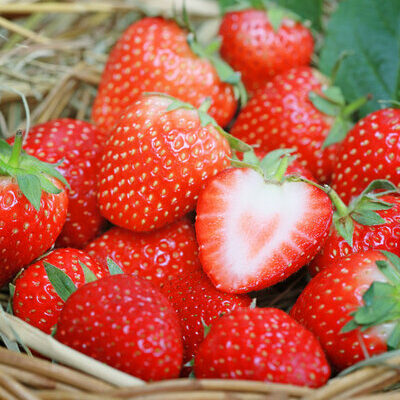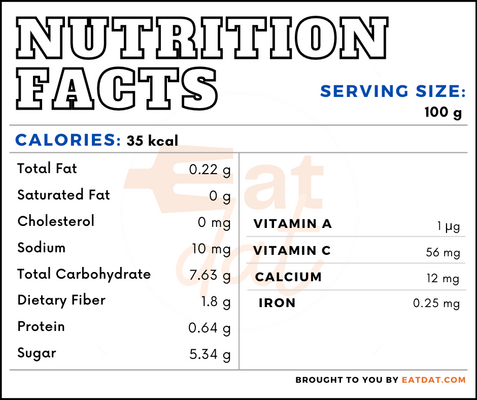
Strawberry
What is a Strawberry?
The strawberry is a small red fruit, with a distinctive heart shape. Despite its name, it is not actually a berry but a multiple fruit. It has a fruity sweet flavor and is filled with juice. This fruit is often consumed raw, but is also ideal for making cocktails, ice cream, milkshakes, juice, and strawberry milk.
- Strawberries are extensively used in baked goods like pies as well as in confections like jams and preserves.
- There are numerous strawberry varieties in existence.
The most popular strawberry cultivars include:
- Honeoye
- Earliglow
- Allstar
- Ozark Beauty
- Chandler
- Jewel
- Seascape
- Tristar
- Sparkle
- Surecrop
- Fort Laramie
Origin of strawberry
The strawberry has a long history and is native to the Americas. The modern strawberry is a mix between the fragaria virginiana and the fragaria chiloensis. European colonizers found the former in North America and took the aromatic and delicious fruit back to France in 1624. Later, in 1712, the fragaria chiloensis variety was brought from Chile to France. The two cross-bred automatically to produce the modern Fragaria x ananassa. This is the variety that is currently cultivated throughout the world, even in the Americas. However, wild strawberries were very popular in ancient Roman, Egyptian, and Greek civilizations, and featured in mythologies.
Nutrition
Nutritional profile for strawberry (100 g):

Strawberries are rich in micronutrients such as calcium, magnesium, phosphorous, potassium, sodium, vitamin C, folate, lutein + zeaxanthin, and vitamin K. Regular consumption of strawberries may help in preventing inflammation, oxidative stress, obesity, cardiovascular diseases, neurodegenerative diseases, diabetes, as well as certain types of cancers.
Commercial production
China is the world’s largest producer of strawberries, followed by the USA, Mexico, Turkey, Egypt, Spain, South Korea, Poland, Russia, Japan, Morocco, Germany, the UK, and Italy. Strawberries are a cool climate crop. They thrive in rich humus soil with mild acidic content. The fruit is harvested when it matures to around 75 percent.
This fruit is known for having a short shelf life. Still, strawberries can last for up to 7 days when stored in the refrigerator. Also, they are frozen to last longer.
Strawberry recipes
These fruits can be consumed whole, dipped in chocolate or cream, made into smoothies, milkshakes, or ice cream. This fruit can be used in baked goods such as cakes, pies, breads, and tarts. They may also be used to prepare salads. Here are a few recipes to try:
- Cake
- Oatmeal Bars
- Strawberry Cream
- Cobbler
- Fregola Pazzo
- Zabaglione
- Panna Cotta
- Eper Szörp
- Palacsinta
- Strawberry Jam
- Strawberry Bread
- Clafouti
- Fraisier
- Kaiserschmarrn
- Strawberry Fool
- Tanghulu
FDA regulations
The FDA describes all fresh fruits, including strawberries, as raw agricultural commodity and strictly regulates all aspects of their growing, harvesting, packing, and storage. Juice made from strawberries must have a contain at least 8 percent pure juice.
References
Strawberry: A Brief History, Integrated Pest Management, University of Missouri, https://ipm.missouri.edu/meg/2012/5/Strawberry-A-Brief-History/
Afrin, Sadia et al. “Promising Health Benefits of the Strawberry: A Focus on Clinical Studies.” Journal of agricultural and food chemistry vol. 64,22 (2016): 4435-49. doi:10.1021/acs.jafc.6b00857, https://pubmed.ncbi.nlm.nih.gov/27172913/
Miller, Katharina et al. “Bioactive Compounds of Strawberry and Blueberry and Their Potential Health Effects Based on Human Intervention Studies: A Brief Overview.” Nutrients vol. 11,7 1510. 2 Jul. 2019, doi:10.3390/nu11071510, https://www.ncbi.nlm.nih.gov/pmc/articles/PMC6683271/
